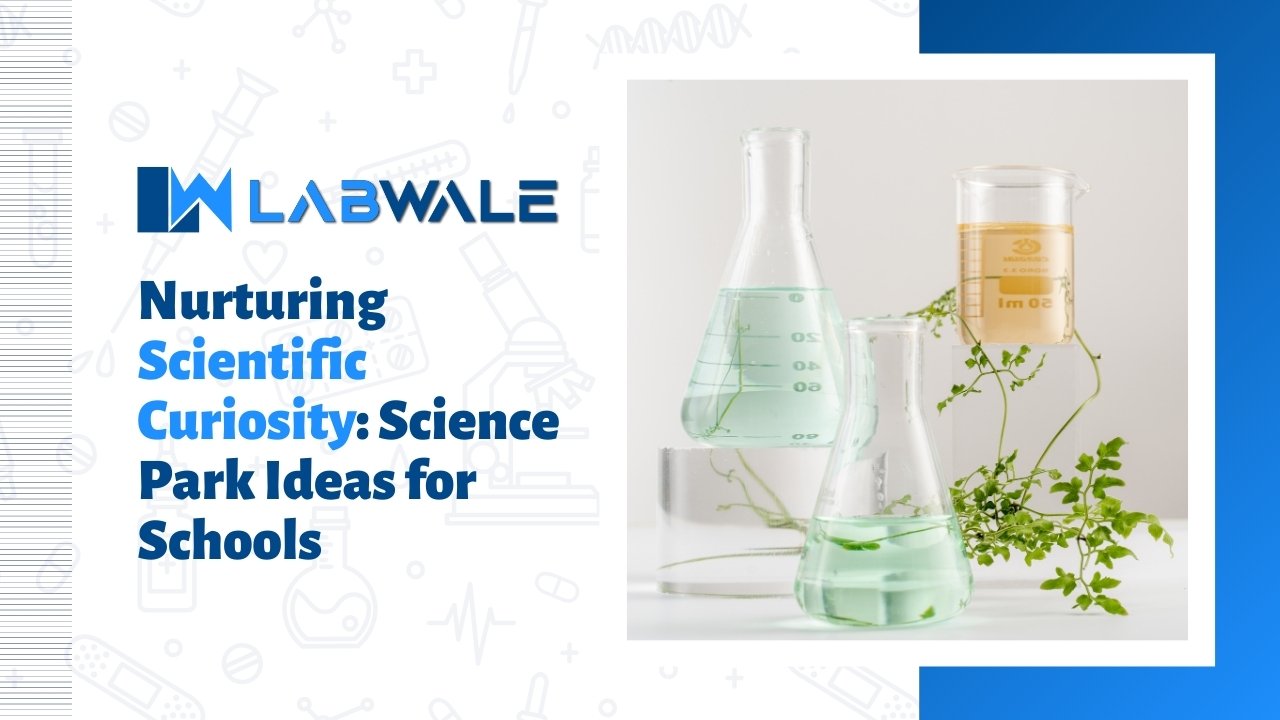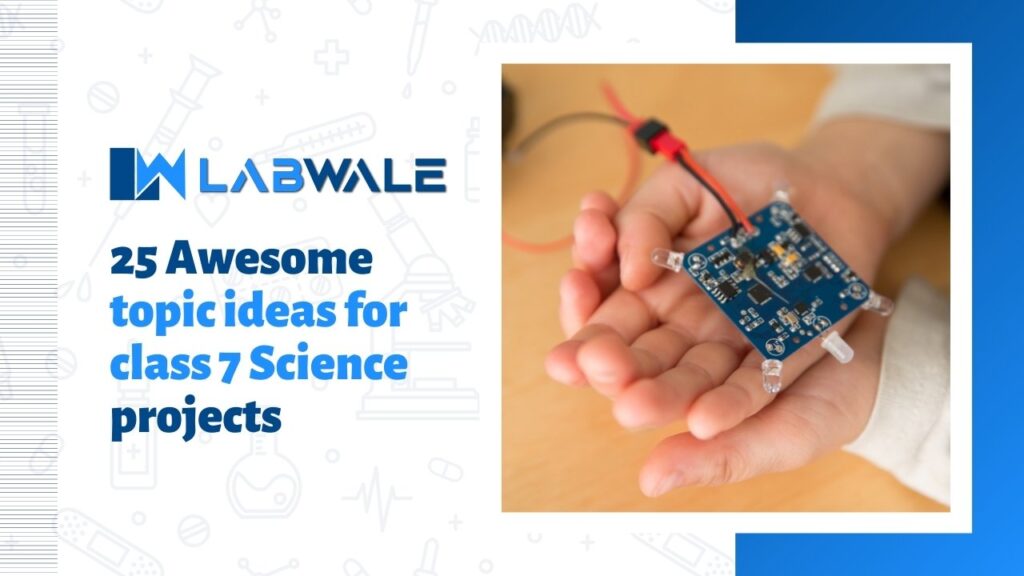-
-
 Cardiology
Cardiology
-
 Clinical Oncology
Clinical Oncology
-
 Dental
Dental
-
 Dermatology
Dermatology
-
 Ear, Nose, Throat (ENT)
Ear, Nose, Throat (ENT)
-
 Endocrinology
Endocrinology
-
 Gastroenterology
Gastroenterology
-
 General Surgery
General Surgery
-
 Gynecology & Obstetrics
Gynecology & Obstetrics
-
 Interventional Cardiology
Interventional Cardiology
-
 Nephrology
Nephrology
-
 Neurology
Neurology
-
 Oncology Surgery
Oncology Surgery
-
 Ophthalmology
Ophthalmology
-
 Orthopedics
Orthopedics
-
 Pediatrics
Pediatrics
-
 Pediatrics Surgery
Pediatrics Surgery
-
 Physiotherapy
Physiotherapy
-
 Plastic Surgery
Plastic Surgery
-
 Psychiatry & Psychology
Psychiatry & Psychology
-
 Radiology
Radiology
-
 Urology
Urology
-
 Vascular Surgery
Vascular Surgery
-
Nurturing Scientific Curiosity: Science Park Ideas for Schools

Contents
- Understanding the Concept of a Science Park for Schools
- Why Science Parks Are Essential for Experiential Learning
- How Science Parks Inspire Curiosity and Critical Thinking
- The Role of Outdoor Learning in Modern Education
- Key Educational Objectives Behind School Science Parks
- Age-Appropriate Science Park Ideas for Primary Students
- Engaging Science Park Concepts for Middle School Learners
- Advanced Science Park Installations for High School Students
- Interactive Physics Models That Make Learning Fun
- Casein Powder (Protein Rich) – 500gm
- CBSE Class 6 Science Apparatus
- CBSE Class 7 Science Apparatus
- CBSE Class 8 Science Apparatus
- Magnesium Ribbon
- Mercuric Chloride Solution 5% (125 ml)
- Nitric Acid CP Grade 2.5 Litres
- Petridish / Petri Plate – Sterile (Plastic / Individual pack / 90mm) (Pack of 600)
- Student Microscope
- Student Microscope with LED Lamp
- Student Microscope with LED Lamp & Dissection Kit
- Trichloro Acetic Acid-10% Solution (500 ml)
- Hands-On Chemistry Zones for Safe Scientific Exploration
- Biology-Focused Science Park Ideas to Explore Life Sciences
- Environmental Science Parks Promoting Sustainability Awareness
- Renewable Energy Demonstrations for Green Learning
- STEM-Based Science Park Designs for Future-Ready Skills
- Integrating Technology and Innovation in Science Parks
- Low-Cost Science Park Ideas for Budget-Friendly Schools
- Safety Guidelines and Best Practices for School Science Parks
- Designing Inclusive Science Parks for All Learning Abilities
- How Science Parks Support Curriculum-Based Learning
- Benefits of Science Parks for Teachers and Educators
- Long-Term Educational Impact of Science Parks in Schools
- Tips for Planning and Maintaining a School Science Park
- Conclusion
- Frequently Asked Questions About Science Park
Imagine students wandering through a vibrant, outdoor environment where learning leaps off the pages of textbooks and into their hands. Picture young minds ignited by curiosity as they experiment with physics, explore biology, or dive into chemistry—all in one dynamic space. Science parks for schools are transforming traditional education by creating immersive experiences that engage students on multiple levels.
These innovative spaces not only foster scientific inquiry but also promote critical thinking skills essential for the 21st century. As educators look to modernize curricula and enhance student engagement, science parks emerge as vital tools in nurturing a love for discovery and exploration. Let’s delve into what makes these educational hubs so impactful and how you can implement them in your own school setting!
Understanding the Concept of a Science Park for Schools
A science park for schools is more than just a collection of equipment; it’s an interactive learning environment. These parks integrate various scientific disciplines, allowing students to engage with hands-on projects and experiments.
Imagine areas dedicated to physics demonstrations, biology gardens, or chemistry labs—all designed to spark interest and excitement in the sciences. Each section encourages exploration through direct experience rather than passive observation.
The goal is to make scientific concepts tangible. Students can see, touch, and experiment with their surroundings, deepening their understanding of complex topics.
These spaces also foster collaboration among peers. Working together on projects cultivates teamwork skills while enhancing problem-solving abilities—essential traits for future leaders in any field.
Science parks serve as living laboratories where curiosity thrives. They invite learners to question, discover, and innovate in ways that traditional classrooms often cannot replicate.
Why Science Parks Are Essential for Experiential Learning
Science parks serve as immersive environments where students can engage directly with scientific principles. This hands-on approach transforms traditional learning into an adventure, allowing kids to explore concepts through real-world applications.
Experiential learning thrives in these dynamic spaces. Students are not just passive recipients of information; they become active participants in their education. They experiment, make observations, and draw conclusions—all essential components of the scientific method.
Engagement levels soar when learners interact with exhibits or participate in demonstrations. Curiosity flourishes as students ask questions and seek answers beyond textbooks.
Furthermore, science parks encourage collaboration among peers. Working together on projects fosters teamwork skills while deepening understanding of complex topics.
By integrating play with discovery, science parks create memorable experiences that resonate long after the lesson ends.
How Science Parks Inspire Curiosity and Critical Thinking
Science parks serve as vibrant playgrounds for the mind, sparking curiosity with every interactive display. When students engage directly with scientific concepts, they begin to ask questions rather than memorize facts. This inquiry-based approach fosters a love for exploration.
Hands-on activities encourage learners to think critically. They analyze data, make predictions, and test hypotheses in real time. Such experiences cultivate an environment where wondering becomes part of learning.
The diverse installations within science parks invite different perspectives on complex topics. Whether it’s understanding ecosystems or exploring basic physics principles, each exhibit challenges students to connect theory with practice.
This dynamic atmosphere nurtures problem-solving skills essential for modern education. As young minds navigate through experiments and demonstrations, they develop a deeper appreciation for the scientific method—a vital tool that extends beyond classroom walls into everyday life.
The Role of Outdoor Learning in Modern Education
Outdoor learning offers students a refreshing break from traditional classroom settings. It allows them to engage with their environment and sparks curiosity through hands-on experiences.
When children step outside, they often connect learning with real-world scenarios. This connection deepens understanding and retention of concepts. Whether observing nature or conducting experiments, outdoor activities can transform abstract ideas into tangible experiences.
Moreover, being in nature promotes physical activity, enhancing overall well-being. Students not only learn about science but also develop social skills while collaborating outdoors.
The dynamic atmosphere encourages creativity and critical thinking as learners explore freely without the confines of four walls. Each moment spent outside shapes their perspective on subjects like environmental science or biology.
Incorporating outdoor spaces into lessons fosters enthusiasm for exploration, making education more engaging and relevant for today’s youth.
Key Educational Objectives Behind School Science Parks
School science parks serve multiple educational objectives that enrich student learning experiences. They foster an environment where theoretical knowledge meets practical application, allowing students to engage deeply with scientific concepts.
One key objective is promoting inquiry-based learning. Students are encouraged to ask questions, conduct experiments, and explore solutions independently. This process nurtures their natural curiosity.
Another goal is enhancing collaboration among peers. Science parks often involve group activities that require teamwork, helping students develop essential communication skills while sharing ideas and findings.
Additionally, these parks aim to build critical thinking abilities. By investigating real-world problems through hands-on projects, learners enhance their analytical skills and learn to approach challenges methodically.
Moreover, school science parks emphasize the importance of sustainability and environmental awareness. Students gain insights into ecological issues while exploring innovative solutions for a greener future.
Together, these objectives shape well-rounded individuals prepared for academic challenges ahead.
Age-Appropriate Science Park Ideas for Primary Students
Creating age-appropriate science parks for primary students fosters a love for discovery. These young minds thrive in environments that spark wonder and imagination.
Consider interactive exhibits like a giant water cycle model. Kids can see evaporation, condensation, and precipitation in action. This hands-on approach makes complex ideas relatable.
Another exciting idea is a sensory garden filled with plants to touch, smell, and observe. It encourages exploration while teaching about ecosystems and biodiversity.
A small weather station allows children to record daily temperatures or wind speeds. Engaging them in real-time data collection builds their analytical skills early on.
Incorporating art into science is equally vital. An art wall where kids can paint their favorite scientific concepts bridges creativity with learning seamlessly.
These initiatives nurture curiosity and encourage teamwork among young learners as they explore the wonders of the natural world together.
Engaging Science Park Concepts for Middle School Learners
Middle school is a pivotal time for developing scientific curiosity. Engaging concepts can spark interest and promote exploration.
One idea is an interactive weather station. Students can track real-time data, learn about meteorology, and even conduct experiments related to climate change.
Another exciting concept involves building a model solar system. This hands-on project allows students to grasp scale and distance while exploring planetary science.
Incorporating robotics into the park is also powerful. Middle schoolers can design, build, and program robots for specific tasks, enhancing their understanding of engineering principles.
A dedicated area for eco-gardening offers practical lessons in biology and sustainability. Students engage with nature while learning the importance of biodiversity.
By intertwining fun activities with core scientific principles, these concepts resonate well with middle school learners’ desire for discovery and creativity.
Advanced Science Park Installations for High School Students
High school students thrive in environments that challenge their intellect and creativity. Advanced science park installations can offer just that, transforming traditional learning into an exciting adventure.
Imagine interactive exhibits featuring robotics labs where students can build and program their own robots. Such hands-on experiences deepen understanding of complex concepts like coding and mechanics.
Outdoor physics stations provide real-world applications of theories. Students can engage with pendulums, catapults, or even solar panels to see the laws of motion in action.
Biotechnology zones introduce learners to genetics through DNA extraction activities or microbial studies. These practical experiments spark interest in fields such as medicine and environmental science.
Augmented reality (AR) tools could immerse students in virtual simulations, allowing them to explore ecosystems or human anatomy without leaving the campus grounds. Each installation is a gateway for exploration and innovation, inspiring future scientists along the way.
Interactive Physics Models That Make Learning Fun
Interactive physics models transform abstract concepts into tangible experiences. Imagine students launching mini rockets or manipulating pendulums in hands-on demonstrations. These activities ignite excitement and deepen understanding.
Using interactive displays, learners can visualize forces at play. They can experiment with variables like mass, velocity, and angle of launch. This engagement fosters a deeper grasp of fundamental principles.
Moreover, collaborative projects encourage teamwork and problem-solving skills. Students learn from each other while exploring the laws of motion or energy transfer together.
Integrating technology enhances these models further. Augmented reality apps can overlay digital information onto physical experiments, providing instant feedback and fostering exploration beyond traditional textbooks.
When learning feels like play, curiosity thrives. Interactive physics not only makes lessons enjoyable but also cultivates critical thinkers ready to tackle real-world challenges in science and engineering fields.
Hands-On Chemistry Zones for Safe Scientific Exploration
Hands-on chemistry zones offer students a unique opportunity to dive into the world of science through safe and engaging experiments. These interactive spaces can spark interest in young minds while reinforcing core concepts from their curriculum.
Setting up designated areas with secure workstations allows learners to explore various chemical reactions safely. Equipped with child-friendly materials, these zones make it possible for students to experiment without the risk associated with traditional labs.
Imagine students mixing baking soda and vinegar, watching as bubbles form in an eruption that’s both exciting and educational. Such activities not only demonstrate fundamental principles but also ignite curiosity about everyday substances.
By encouraging exploration within these colorful environments, schools foster a love for chemistry that can last a lifetime. This hands-on approach transforms abstract theories into tangible experiences, making learning memorable and enjoyable for every student involved.
Biology-Focused Science Park Ideas to Explore Life Sciences
A biology-focused science park can be a treasure trove of learning opportunities. Imagine interactive gardens where students can study plant growth and photosynthesis firsthand. Incorporating native flora attracts local pollinators, offering real-world insights into ecosystems.
Creating a mini-laboratory outdoors allows for hands-on experiments with soil samples and water quality tests. Students can engage in activities like observing microorganisms under microscopes or conducting simple experiments that unveil the wonders of microbiology.
Incorporating outdoor classrooms equipped with nature trails encourages exploration and observation. Guided walks help students identify various species while discussing their roles in the ecosystem.
Engaging stations dedicated to human anatomy provide models for students to explore body systems, fueling curiosity about how everything works together. Such experiences foster a deep appreciation for life sciences while promoting environmental stewardship and responsible citizenship among young learners.
Environmental Science Parks Promoting Sustainability Awareness
Environmental science parks serve as dynamic outdoor classrooms, immersing students in the principles of sustainability. Through hands-on activities and interactive exhibits, learners engage directly with their natural surroundings.
These parks often showcase ecosystems, highlighting native plants and wildlife. Students can explore habitats while understanding the importance of biodiversity.
Rain gardens or composting stations within these spaces teach vital skills on waste management and resource conservation. By participating in such initiatives, children grasp how their actions impact the environment.
Workshops focused on renewable energy sources further ignite curiosity about sustainable practices. Solar panels or wind turbines demonstrate practical applications that students can relate to their daily lives.
Through experiential learning in environmental science parks, young minds develop a sense of responsibility towards the planet. This awareness fosters future generations who prioritize ecological health and advocate for sustainable solutions.
Renewable Energy Demonstrations for Green Learning
Renewable energy demonstrations are powerful tools for engaging students in green learning. They provide hands-on experience that brings theoretical concepts to life. Imagine a solar panel setup where students can see how sunlight transforms into electricity.
Wind turbines offer another exciting avenue. Students can construct small models and observe the mechanics of wind power firsthand. The whirring blades become a tangible lesson in renewable sources.
Biomass projects, such as composting stations, teach sustainability by turning waste into resources. This cycle helps foster an appreciation for environmental responsibility from a young age.
Incorporating these elements not only educates but sparks discussions about climate change and energy consumption. It encourages learners to think critically about their choices and the future of our planet.
These activities cultivate eco-conscious citizens who understand their role in advancing sustainability efforts within their communities.
STEM-Based Science Park Designs for Future-Ready Skills
STEM-based science park designs are crucial for fostering future-ready skills in students. These parks create an environment where young minds can explore, experiment, and engage with real-world challenges.
Imagine spaces filled with interactive exhibits that encourage collaboration and innovation. Students could work on robotics projects or coding stations designed to spark creativity through technology.
Incorporating elements like 3D printing labs enables hands-on learning experiences while cultivating problem-solving abilities. Through trial and error, learners develop resilience—an essential skill for navigating their futures.
Furthermore, integrating design thinking principles encourages students to brainstorm solutions for societal issues. This approach nurtures both critical thinking and teamwork.
STEM-focused science parks empower the next generation of thinkers and doers. They prepare students not just academically but also socially, equipping them with versatile skills needed in an ever-evolving job market.
Integrating Technology and Innovation in Science Parks
Technology plays a crucial role in modern science parks. It transforms traditional learning into interactive experiences.
Imagine students using augmented reality apps to visualize complex biological processes. They can explore the human body or ecosystems without leaving their outdoor classroom.
Additionally, robotics stations encourage creativity and problem-solving. Students design, build, and program robots for challenges related to environmental conservation or physics concepts.
Data collection tools enhance hands-on experiments. With sensors that measure temperature, pH levels, or air quality, learners engage deeply with scientific inquiry.
Moreover, integrating coding workshops fosters essential skills for the future workforce. Understanding algorithms empowers students to tackle real-world issues creatively.
By weaving technology into every aspect of science parks, educators create vibrant environments where innovation thrives and curiosity flourishes.
Low-Cost Science Park Ideas for Budget-Friendly Schools
Creating an engaging science park doesn’t have to break the bank. Schools can utilize simple, low-cost materials readily available in their communities.
Repurposing old tires as planters or climbing structures is one idea that brings both creativity and function to outdoor spaces. These colorful installations add character while promoting physical activity.
A solar oven made from cardboard boxes allows students to explore renewable energy concepts without significant investment. This hands-on project teaches essential principles of heat and light using everyday items.
Incorporating native plants into school gardens fosters a deeper understanding of local ecosystems, making biology more relevant for students. Local partnerships with businesses can also provide donations or sponsorships, further reducing costs.
Community volunteer days can engage parents and neighbors in building the science park. This not only saves money but strengthens community ties around educational goals.
Safety Guidelines and Best Practices for School Science Parks
Safety is a top priority in any school setting, especially in science parks where hands-on activities occur. Begin by establishing clear guidelines for student behavior and interaction with equipment.
Regularly inspect all installations, ensuring they are well-maintained. Loose components or weathered materials can pose risks to curious minds. Outdoor areas should be free from hazards like sharp objects or unstable surfaces.
Supervision plays a crucial role. Teachers and staff must monitor students during experiments and exploration to provide immediate assistance if needed.
Incorporate safety gear when appropriate—goggles for chemistry zones or helmets in physics areas can prevent injuries during trial-and-error learning sessions.
Create an emergency response plan tailored to the park’s specific layout and features. Familiarize both students and staff with evacuation routes and procedures, ensuring everyone feels secure while exploring scientific wonders.
Designing Inclusive Science Parks for All Learning Abilities
Designing inclusive science parks means creating spaces that cater to diverse learning abilities. Every student deserves the chance to explore and engage with scientific concepts, regardless of their challenges.
Consider accessibility first. Pathways should be wide and smooth, allowing easy navigation for wheelchairs or mobility devices. Interactive exhibits can incorporate tactile elements for students who are visually impaired, ensuring they feel included in hands-on activities.
Additionally, signage with clear visuals and simple language makes information accessible for all learners. Adaptable stations allow students to participate at their own level, encouraging collaboration among peers.
Incorporating sensory gardens offers calming environments where students can relax while observing nature’s wonders. These elements promote not just learning but emotional well-being too.
By prioritizing inclusivity in design, science parks become vibrant hubs of discovery that celebrate the unique contributions of each learner. This approach transforms education into a shared adventure filled with curiosity and understanding.
How Science Parks Support Curriculum-Based Learning
Science parks serve as vibrant extensions of classroom learning. They create dynamic environments where students can see theoretical concepts in action.
By integrating hands-on activities, science parks make abstract ideas more tangible. Students engage with real-world applications that deepen their understanding of subjects like physics, biology, and chemistry.
These outdoor settings encourage collaboration among peers. Working together on experiments fosters teamwork and enhances communication skills.
In addition to reinforcing curriculum content, science parks stimulate curiosity. Students often ask questions that lead to further exploration beyond traditional lessons.
Teachers can align park activities with specific educational standards too. This ensures that every visit supports what’s being taught in the classroom while making learning enjoyable.
Students develop a love for discovery through interactive experiences tailored to various age levels. Each visit resonates differently depending on their individual interests and academic needs.
Benefits of Science Parks for Teachers and Educators
Science parks offer numerous benefits for teachers and educators, transforming the traditional classroom experience into something dynamic and interactive. These outdoor learning environments encourage collaboration among students, which enhances teamwork skills.
Educators can utilize these spaces to implement hands-on activities that make complex concepts more accessible. This practical application fosters a deeper understanding of scientific principles.
Additionally, science parks serve as a valuable resource for professional development. Educators can explore innovative teaching strategies while observing student engagement in real-time.
The flexibility of outdoor settings allows teachers to tailor lessons according to students’ interests and needs. Such adaptability often leads to increased motivation and participation from learners.
Moreover, being in nature promotes mental well-being for both students and educators. This connection not only inspires curiosity but also cultivates a positive learning atmosphere where creativity thrives.
Long-Term Educational Impact of Science Parks in Schools
Science parks create lasting memories that students carry into adulthood. These interactive environments foster a love for inquiry and exploration, igniting passions for science and technology early on.
Through hands-on experiences, students develop critical thinking skills vital in today’s world. They learn to ask questions, seek answers, and understand complex concepts beyond the classroom walls.
Collaboration is another significant benefit of science parks. Students often work together on projects, enhancing teamwork abilities essential for future careers. These collaborative efforts can lead to friendships rooted in shared interests.
Moreover, exposure to real-world scientific applications helps solidify theoretical knowledge. When students apply what they’ve learned in engaging settings, retention increases significantly.
As they grow older, these formative experiences encourage many to pursue STEM-related fields. The seeds planted during their time at school could very well blossom into innovative ideas that shape our future society.
Tips for Planning and Maintaining a School Science Park
Planning a school science park requires careful thought and collaboration. Start by involving teachers, students, and parents in the design process. Their insights can shape an engaging space that meets everyone’s needs.
Choose versatile equipment to accommodate various learning activities. Rotating exhibits or hands-on stations can keep engagement high while catering to different age groups.
Maintenance is key for longevity. Regular check-ups on installations ensure safety and functionality. Establish a student-led maintenance team to instill responsibility and ownership over the park.
Designate clear zones for specific disciplines—like physics or biology—to encourage focused exploration while offering diverse experiences.
Incorporate seasonal themes or challenges to keep curiosity alive year-round; this could be anything from nature scavenger hunts to mini science fairs, adding excitement as seasons change.
Conclusion
Creating a science park at school is more than just an educational endeavor. It’s about fostering a culture where curiosity thrives.
These parks serve as dynamic spaces that bridge theoretical knowledge with hands-on learning. The natural environment encourages exploration and experimentation, allowing students to engage deeply with scientific concepts.
As schools embrace innovative teaching methods, the role of science parks becomes increasingly vital. They help prepare students for future challenges by nurturing essential skills like problem-solving and critical thinking.
Every step taken toward building these interactive environments contributes significantly to student engagement and interest in STEM fields. It’s an investment in not only their education but also their ability to innovate tomorrow.
Frequently Asked Questions About Science Park
When setting up a science park at school, many questions arise. Here are some frequently asked queries that can help guide the process.
What is a science park?
A science park is an interactive outdoor space designed to engage students in hands-on scientific exploration. It combines education with play, encouraging curiosity and creativity.
How do you create a budget for a school science park?
Start by assessing available resources and potential funding sources. Collaborate with local businesses or seek grants specifically aimed at educational initiatives.
What age groups benefit from science parks?
Science parks cater to various age groups, adapting activities and installations based on developmental levels—from primary students discovering basic principles to high schoolers exploring complex concepts.
Are there safety measures schools should follow?
Yes! Ensure all equipment is safe and properly maintained. Regular checks for hazards are essential for ensuring student well-being while they explore scientific phenomena.
Can technology be integrated into these spaces?
Absolutely. Incorporating tech elements such as augmented reality experiences or interactive displays can enhance learning outcomes and keep students engaged in their explorations.
How often should the content of a science park be updated?
Regular updates are beneficial to keep material relevant and engaging. Revisiting activities ensures continuous interest among returning students while integrating new scientific discoveries encourages lifelong learning habits.


 Anatomy Lab Equipments
Anatomy Lab Equipments
 Biochemistry Lab Equipments
Biochemistry Lab Equipments
 Biology Lab Equipments
Biology Lab Equipments
 Chemistry Lab Equipments
Chemistry Lab Equipments
 Cytology Lab Equipments
Cytology Lab Equipments
 Cytopathology Lab Equipments
Cytopathology Lab Equipments
 Dental Lab Equipments
Dental Lab Equipments
 Forensic Lab Equipments
Forensic Lab Equipments
 Genetics Lab Equipments
Genetics Lab Equipments
 Hematology Lab Equipments
Hematology Lab Equipments
 Histology Lab Equipments
Histology Lab Equipments
 Histopathology Lab Equipments
Histopathology Lab Equipments
 Mathematics Lab Equipments
Mathematics Lab Equipments
 Microbiology Lab Equipments
Microbiology Lab Equipments
 Molecular Biology Lab Equipments
Molecular Biology Lab Equipments
 Pathology Lab Equipments
Pathology Lab Equipments
 Pharmaceutical Lab Equipments
Pharmaceutical Lab Equipments
 Physics Lab Equipments
Physics Lab Equipments
 Radiology Lab Equipments
Radiology Lab Equipments
 Science Lab Kit’s
Science Lab Kit’s
 Toxicology Lab Equipments
Toxicology Lab Equipments

 Borosilicate Glass Beaker
Borosilicate Glass Beaker
 Plastic Beaker (Euro Design)
Plastic Beaker (Euro Design)
 Plastic Beaker (Printed Graduation)
Plastic Beaker (Printed Graduation)
 Test Tube Brush
Test Tube Brush
 Measuring Cylinder Brush
Measuring Cylinder Brush
 Conical Flask Brush
Conical Flask Brush
 Volumetric Flask Brush
Volumetric Flask Brush
 Round Bottom Flask Brush
Round Bottom Flask Brush
 Glass Beaker Brush
Glass Beaker Brush
 Pipette Brush
Pipette Brush
 Wash Bottle Brush
Wash Bottle Brush
 Borosilicate Büchner Flask
Borosilicate Büchner Flask
 Borosilicate Erlenmeyer/Conical Flask
Borosilicate Erlenmeyer/Conical Flask
 Borosilicate Pear-Shaped Flask
Borosilicate Pear-Shaped Flask
 Borosilicate Round Bottom Flask
Borosilicate Round Bottom Flask
 Plastic Conical Flask
Plastic Conical Flask
 Plastic Volumetric Flask
Plastic Volumetric Flask
 Bunsen Burner
Bunsen Burner
 Spirit Lamp
Spirit Lamp
 Borosilicate Glass Burette
Borosilicate Glass Burette
 Plastic Burette
Plastic Burette
 Capillary Tube
Capillary Tube
 Centrifuge Tube
Centrifuge Tube
 Test Tube
Test Tube
 Ria Vial
Ria Vial
 Vacutainer Tubes
Vacutainer Tubes
 Syringes
Syringes
 Student Microscope
Student Microscope
 Binocular Microscope
Binocular Microscope
 Dissecting Microscope
Dissecting Microscope
 Microscope Glass Slides
Microscope Glass Slides
 Cover Slip
Cover Slip
 Inoculating Loop
Inoculating Loop
 Slide Box
Slide Box
 Lamps
Lamps
 Oils
Oils
 Beaker Tongs
Beaker Tongs
 Crucible Tongs
Crucible Tongs
 Flask Tongs
Flask Tongs
 Borosilicate Glass Funnel
Borosilicate Glass Funnel
 Plastic Funnels
Plastic Funnels
 Wash Bottle
Wash Bottle
 Borosilicate Glass Reagent Bottle
Borosilicate Glass Reagent Bottle
 Plastic Reagent Bottle
Plastic Reagent Bottle
 Borosilicate Measuring Cylinder
Borosilicate Measuring Cylinder
 Plastic Measuring Cylinder
Plastic Measuring Cylinder
 Borosilicate Glass Graduated Pipette
Borosilicate Glass Graduated Pipette
 Borosilicate Glass Volumetric Pipette
Borosilicate Glass Volumetric Pipette
 HB Pipette
HB Pipette
 Pasteur Pipette
Pasteur Pipette
 Micropipettes
Micropipettes
 Micropipette Tips
Micropipette Tips
 Filter Paper
Filter Paper
 Litmus Paper
Litmus Paper
 pH Paper
pH Paper
 Chromatography Paper
Chromatography Paper
 Plastic Petri Plates (Sterile)
Plastic Petri Plates (Sterile)
 Glass Petri Plates (Non-Sterile)
Glass Petri Plates (Non-Sterile)
 Safety Goggles
Safety Goggles
 Lab Coats
Lab Coats
 Gloves
Gloves
 Masks
Masks
 Shoe Covers
Shoe Covers
 Hair & Beard Covers
Hair & Beard Covers
 Steel Spatula
Steel Spatula
 Plastic Spatula
Plastic Spatula
 Hitachi Sample Cup
Hitachi Sample Cup
 Plastic Scoop
Plastic Scoop
 Plastic Medicine Cup
Plastic Medicine Cup
 Dissecting Tool Kit
Dissecting Tool Kit
 Dissecting Forceps
Dissecting Forceps
 Hemostatic Forceps
Hemostatic Forceps
 Thumb Forceps / Tweezers
Thumb Forceps / Tweezers
 Blood Culture Bottle
Blood Culture Bottle
 Urine Container
Urine Container
 Wooden Swab Stick
Wooden Swab Stick
 Test Tube Holder
Test Tube Holder
 Test Tube Racks
Test Tube Racks
 Magnifying Glass
Magnifying Glass
 Watch Glass
Watch Glass
 Mortar and Pestle
Mortar and Pestle
 Coplin Jar
Coplin Jar
 Plastic Stirrer
Plastic Stirrer
 Glass Stirrer
Glass Stirrer
 Crucible
Crucible
 Tripod
Tripod
 Wire Mesh
Wire Mesh
 Laboratory Thermometer
Laboratory Thermometer
 Tourniquet
Tourniquet
 Alcohol Swab
Alcohol Swab
 Blood Lancet
Blood Lancet
 Bandage
Bandage
 Gloves & Masks
Gloves & Masks



















 Cardiology
Cardiology Clinical Oncology
Clinical Oncology






